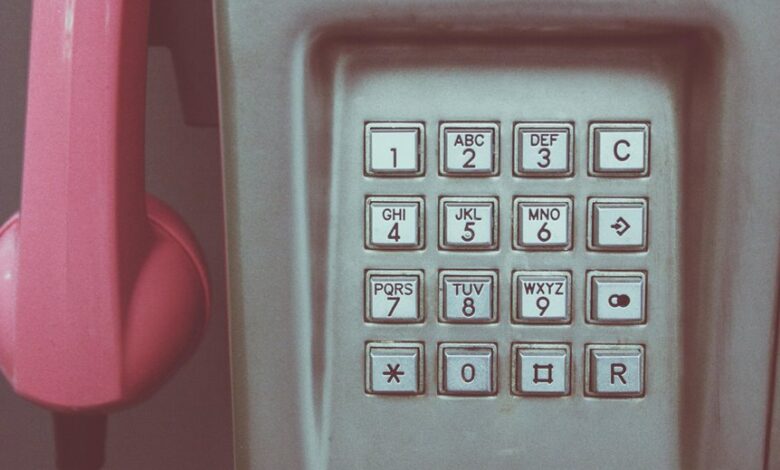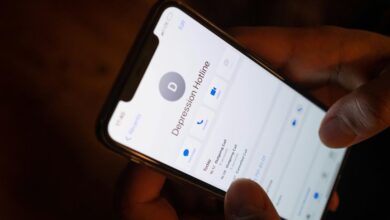Search Who Contacted You: 2392528000, 2394325100, 2409301374, 2482780890, 2482780892, 2487816921

Receiving calls from unfamiliar numbers can be unsettling. Numbers like 2392528000, 2394325100, and others often raise questions about their origins. Understanding who is on the other end is crucial for personal safety and avoiding potential scams. This situation prompts the need for effective strategies, such as reverse phone lookup services. However, knowing how to navigate this landscape is essential. What steps can one take to uncover the truth behind these calls?
Understanding the Importance of Identifying Unknown Callers
Why is it crucial for individuals to identify unknown callers?
Caller identification importance cannot be overstated, as it directly correlates with unknown caller safety. In an age of relentless technological advancement, individuals must discern potentially harmful contacts from benign ones.
This discernment empowers them to protect their autonomy and privacy, allowing informed decisions that safeguard against scams, harassment, and unwanted intrusions.
How to Use Reverse Phone Lookup Services
Utilizing reverse phone lookup services can effectively unveil the identity of unknown callers, providing users with essential information to make informed decisions.
The reverse lookup benefits are significant, addressing privacy concerns while empowering individuals.
- Identify harassing numbers
- Ensure safety from scams
- Reconnect with old acquaintances
- Maintain personal security
- Enhance decision-making regarding calls
Common Reasons for Receiving Calls From Unknown Numbers
Although receiving calls from unknown numbers can be unsettling, there are several common reasons behind these unsolicited communications.
Many individuals experience such calls due to common caller motivations, including telemarketing efforts, political surveys, or scams.
Recognizing telemarketing patterns can assist in identifying these callers, thereby empowering individuals to make informed decisions about their responses and ultimately reclaiming their autonomy in communication.
Tips for Protecting Yourself From Spam and Telemarketing Calls
Individuals seeking to shield themselves from spam and telemarketing calls can benefit from practical strategies such as utilizing call blocking applications and registering with the National Do Not Call Registry.
These tools not only reduce the frequency of unwanted calls but also empower users to take control of their phone communications.
Use Call Blocking Apps
As spam and telemarketing calls continue to inundate personal and professional phone lines, employing call blocking apps emerges as a practical solution for reducing unwanted interruptions.
These apps provide essential features that empower users to reclaim their time and privacy, offering:
- Instant call rejection
- User-friendly interfaces
- Customizable block lists
- Frequent updates
- Community feedback
Adopting such tools fosters a sense of freedom from incessant disturbances.
Register With Do Not Call
Registering with the National Do Not Call Registry represents a proactive measure that individuals can take to shield themselves from the incessant barrage of spam and telemarketing calls.
This do not call registration aligns with telemarketing regulations designed to protect consumer privacy.
What to Do If You Suspect a Scam Call
When an individual suspects a scam call, it is crucial to recognize specific red flags that may indicate fraudulent intent.
Following the identification of these warning signs, taking appropriate action by reporting the number can help prevent others from falling victim.
Ultimately, blocking and ignoring such calls ensures that one minimizes further attempts at deception.
Identify Red Flags
Recognizing the red flags associated with potential scam calls is crucial for protecting personal information and financial security.
Individuals should remain vigilant for these warning signs:
- Unsolicited calls from unknown numbers
- High-pressure tactics for immediate action
- Requests for sensitive information
- Promises of unrealistic rewards
- Caller ID discrepancies
Awareness of these indicators empowers individuals to safeguard their freedom against deceitful schemes.
Report the Number
Taking action after identifying potential scam calls is imperative for both personal safety and community awareness.
Individuals should familiarize themselves with reporting procedures to ensure that suspicious numbers are documented. Utilizing caller identification helps to accurately relay information to authorities.
Reporting these incidents not only protects oneself but also aids in the broader effort to dismantle fraudulent operations targeting vulnerable populations.
Block and Ignore
Blocking and ignoring suspected scam calls is a critical step in safeguarding personal information and minimizing the risk of further harassment.
By taking decisive action, individuals can:
- Block unwanted intrusions
- Protect their privacy
- Maintain peace of mind
- Avoid financial loss
- Reclaim their time
Ignoring spam not only reduces anxiety but empowers people to live free from unsolicited disturbances.
Resources for Reporting Unwanted Calls
A multitude of resources exists for individuals seeking to report unwanted calls, reflecting the growing concern over telemarketing and scam communications.
Key reporting methods include the National Do Not Call Registry, state consumer protection offices, and the Federal Trade Commission.
These platforms empower individuals to reclaim their privacy by documenting unsolicited disturbances, thus promoting a proactive stance against unwanted calls.
Conclusion
In conclusion, identifying unknown callers such as those from the numbers 2392528000, 2394325100, and others is crucial for personal safety. An interesting statistic reveals that nearly 50% of all phone calls made in 2022 were spam, highlighting the prevalence of unwanted solicitations. By utilizing reverse phone lookup services, individuals can take proactive measures against potential scams and make informed decisions about their phone interactions. Staying vigilant and informed is essential in today’s communication landscape.




